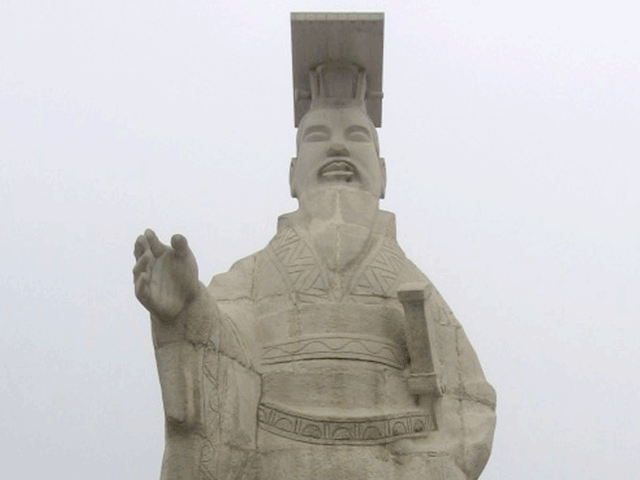<![CDATA[A humongous tomb belonging to the grandmother of the great Qin Shi Huang has been found in Xi'an during excavations to expand the campus of the Xi'an University of Finance and Economics in Shaanxi Province. Qin Shi Huang was the first emperor of China. The tomb measures approximately 173325 sq. m. and stretches to almost 310m in width and 550m in length. Its sheer size makes the tomb the second largest to ever have been uncovered in China. To date, archaeologists have excavated the skeletons of twelve horses and two ancient carriages from the tomb. The carriage and horses are believed to symbolize that the tomb belongs to a person who was equal to the rank of an emperor or a member of a royal family. Archaeologists have also uncovered beautifully engraved pottery that contains Chinese characters along with fragments of gold, jade and silver. These items help to support the fact that this tomb may have belonged to the grandmother of Qin Shi Huang. Whether or not the sarcophagus itself is present remains to be seen. Qin Shi Huang ruled China from 260 BC - 210 BC. He was the first emperor to unify the country, and brought about tremendous economic and political reforms. He managed to remove the feudal overlords and bring stability to one of the most unstable regions in the world at the time. Qui Shi Huang took the throne at the tender age of thirteen, after the death of his father. His mother had two illegitimate children, and her lover Lao Ai tried to stage a coup in order to overthrow and kill Qin Shi Huang. After the failed coup, Qin Shi Huang ordered that his siblings be killed and his mother placed under house arrest. Qin Shi Huang left behind a huge legacy. He was the one who standardized the currency and units of measurement in Ancient China. He was also responsible for creating the first unified Chinese script and the Ban Liang coin. Despite these achievements, his biggest and most well known success was the construction of the Great Wall of China, a defensive system that would protect the country for centuries to come. The location of Qin Shi Huang's tomb had also remained a secret for centuries. Each and every builder associated with the construction was killed and sealed within the chambers by his immediate superior, who were then killed and sealed in by their superiors. This process continued until the last builders were buried and the guards who killed them executed in the capital. The tomb of Qin Shi Huang was finally uncovered in 1974, when a group of farmers digging for wells stumbled upon 6000 terracotta warriors. Archaeologists are extremely excited about the discovery of the tomb of Qin Shi Huang's grandmother as the Emperor was believed to be much closer to her than to his mother. It is believed that there may be a number of artefacts in the tomb that could prove to be a great source of knowledge on this fascinating period in Chinese history. ]]>
Ancient Tomb Dating Back to Emperor Qin Shi Huang Discovered
